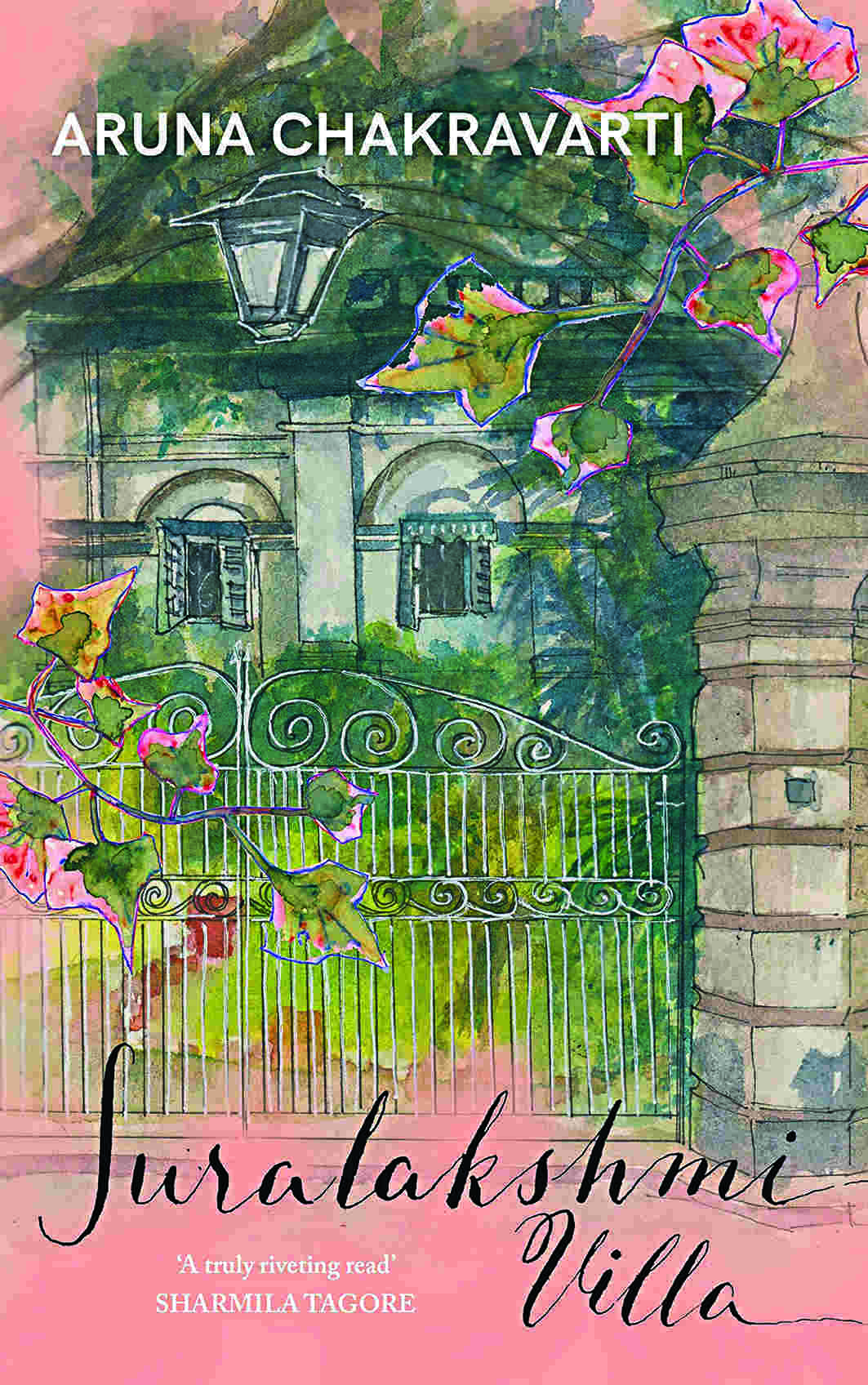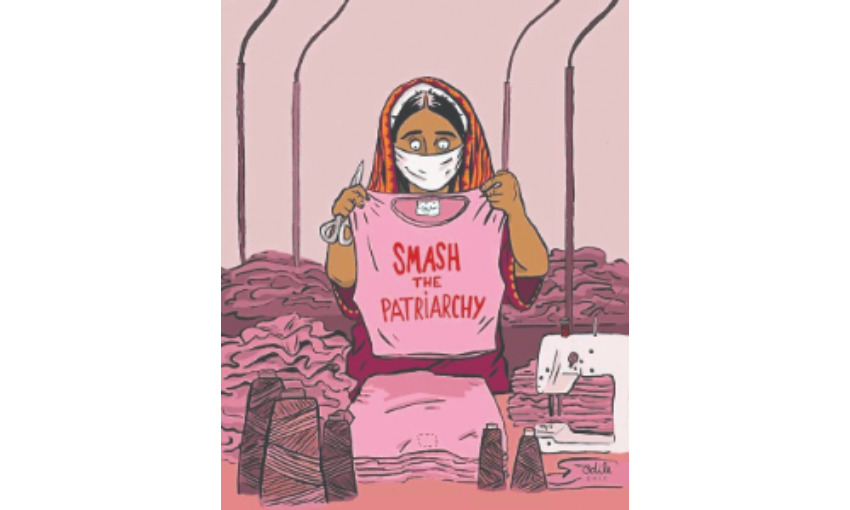"Suralakshmi Villa" | Of universal appeal
Suralakshmi Villa is imbued with Aruna Chakravarti’s keen insight into the condition of women in a patriarchal society, cutting across the social, economic, regional and communal divide — a delicately nuanced, intricately woven, richly layered tale spanning almost half a century; writes Mahasweta Sengupta
Author: Aruna Chakravarti
Publisher: Picador India
From the author of Jorasanko and Daughters of Jorasanko, comes another novel Suralakshmi Villa. This work of fiction has been developed by Aruna Chakravarti from her short story of the same name, on the recommendation of Ruth Prawer Jhabvala. In it, she has spun a delicately nuanced, intricately woven, richly layered tale spanning almost half a century. The story is imbued with the author’s keen insight into the condition of women in a patriarchal society, cutting across the social, economic, regional and communal divide. Through well-delineated characters in lifelike situations, the issues of marriage, motherhood and widowhood have been examined in an easy flowing language that includes regional patois and everyday dialogues to bring alive the story in vivid detail.

The eponymous protagonist is as unconventional, unpredictable and as unfathomable as it gets. In the decade of the '50s, the beautiful, sensitive intelligent Suralakshmi, daughter of Rai Bahadur Indranath Choudhury (ICS, retired Post Master General of India) and a successful gynaecologist in her own right, rejects excellent proposals of marriage till the age of 31, then goes and falls in love with a man ostensibly unworthy of her. She marries and moves in with him to Suralakshmi Villa, built for her by her father and is perfectly amenable to a menage à trois. She bears him a son and five years later departs with the enigmatic words: “I hear the farewell call”. She leaves behind her infant son but takes with her the young Muslim girl she has adopted from Malda. She bequeaths the house her father built, to her erring husband, confounding even her closest friends and relatives.
However, the narrative is not totally focused on Suralakshmi. In the manner of a kaleidoscope, amid multiple viewpoints and styles of expressions – letters, memoirs, flashbacks – the story unfolds, setting Suralakshmi in her lineage, her society and her times. Here is a background that is upper-caste Hindu, urban, affluent, educated and westernised.
Juxtaposed with the story of Suralakshmi and her family is the story of another family – that of a Muslim goatherd in Malda, the poorest of the poor, uneducated, steeped in ignorance and superstition, unexposed to any other culture than its own. Again a family of four daughters but in all its vivid portrayal of the harsh reality of poverty and degradation, a striking study in contrast. Beneath the contrast, however, lies a chilling similarity. Gender bias, cruelty towards widows, sexual abuse and exploitation is prevalent everywhere. We have been shown how social attitudes remain the same across society, though in varying degrees. One is primitive, brutal, the other displays more sophistication but women suffer equally in both.
Suralakshmi’s rescue of Eidun, presaged by dreams, premonitions, and visions, seems providential. One can sense the working of invisible destiny. Her eventual adoption and rehabilitation of Eidun also give a glimpse of empowerment. Throughout the narrative are interspersed examples of empathy between women, the most emotional being Eidun’s and her estranged eldest sister Ojju’s reunion as they get together to save Ojju’s son. Suralakshmi’s mother shocked at the early widowhood of her eldest daughter due to an arranged marriage with a secretly consumptive groom, goes into a deep depression but not before making a vow that each of her five daughters would become educated, independent and would marry whoever and whenever they chose. Here is empowerment at its root.
Suralakshmi’s vacation with Pratul and Tara’s family also opens up another facet of the novel. As she travels with them from their home in the tea estate on the hills of Kurseong down the river through Bengal, the syncretic nature of Indian culture prevalent in many regions has been highlighted by skilfully incorporating legend, history, folklore rituals. From the British influence in the hills to the blending of cultural and culinary practices of Hindus and Muslims, our culture is far from being monolithic, it is assimilative.
And what of the house called Suralakshmi Villa? The novel begins with it and ends with it. It takes on a voice in the final chapters. Suralakshmi Villa holds the key to Suralakshmi’s past and future and it is witness to a terrible secret. It reflects her personality and evolves with her. As the old world crumbles, so too does Suralakshmi Villa, symbolising the change in society and its values. Suralakshmi Villa fades away soon to be taken over by a block of apartments. At this point, we are introduced to two modern women. One is Joymita, Suralakshmi’s cousin Pratul’s daughter and Deepa, Suralakshmi’s son Kingshuk’s wife. The author, a former Principal of a women’s college of Delhi University, continues her observation of women and society. On one hand is Joymita, as impulsive and attractive as her aunt but more rebellious and restless, in search of a direction. On the other is Deepa, equally competent but stable, adaptable and empathetic. So, as Suralakshmi Villa fades away, it hopes for a continuation of Suralakshmi’s legacy through Deepa.
Thus, from the emotional intensity and the dense imagery of the Jorasanko novels, let your mind soar from developing urban Delhi to the hills, forests, rivers and ancestral homes of Bengal, with its treasure trove of legend, folklore and of course culinary delights. At the same time delve into the depths of the human heart and mind and witness the social realities behind the rural-urban, deprived-affluent divide, as well as the growing modern urban angst and aspirations. Therein you will find the universal appeal of Suralakshmi Villa.
Views expressed are personal



